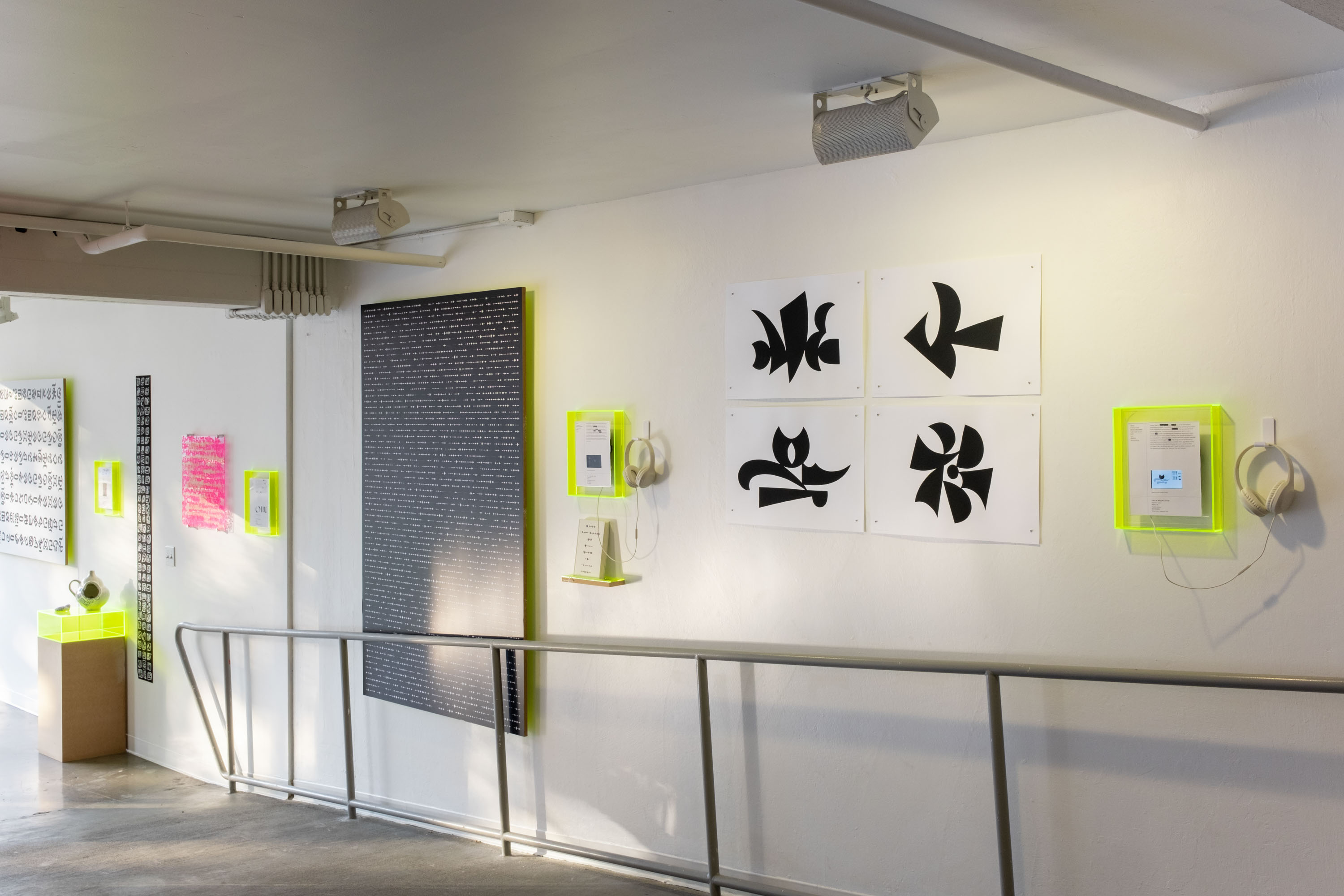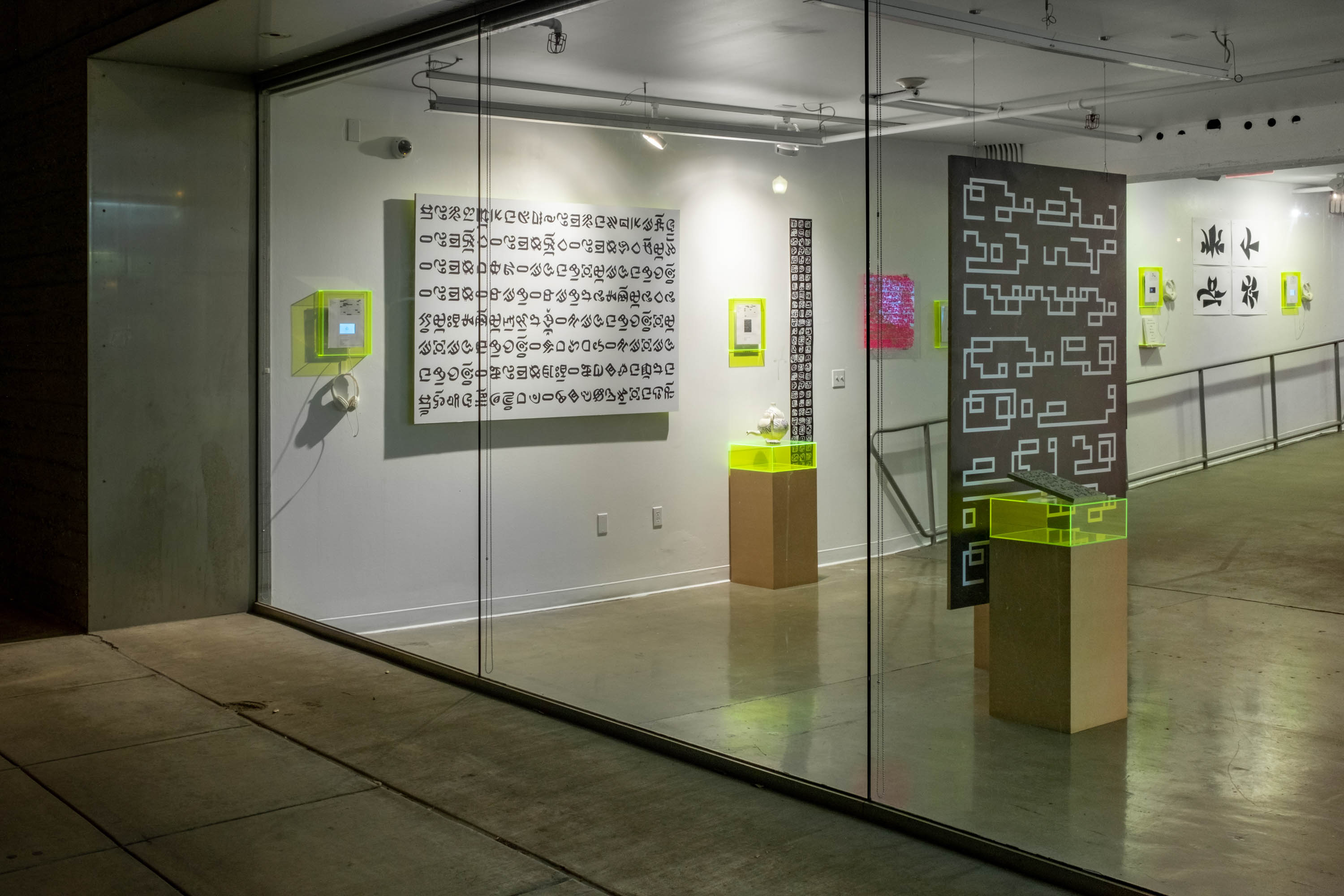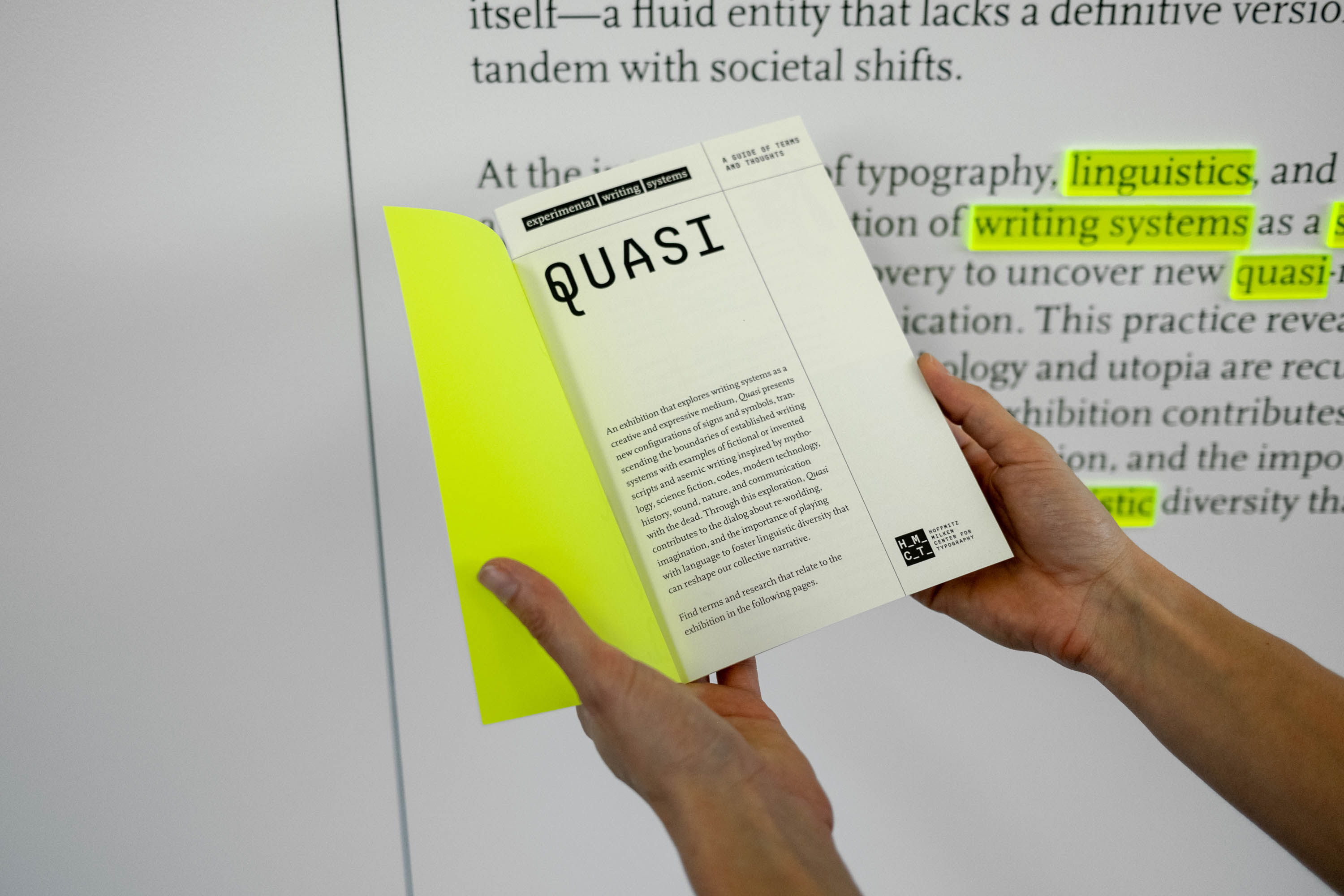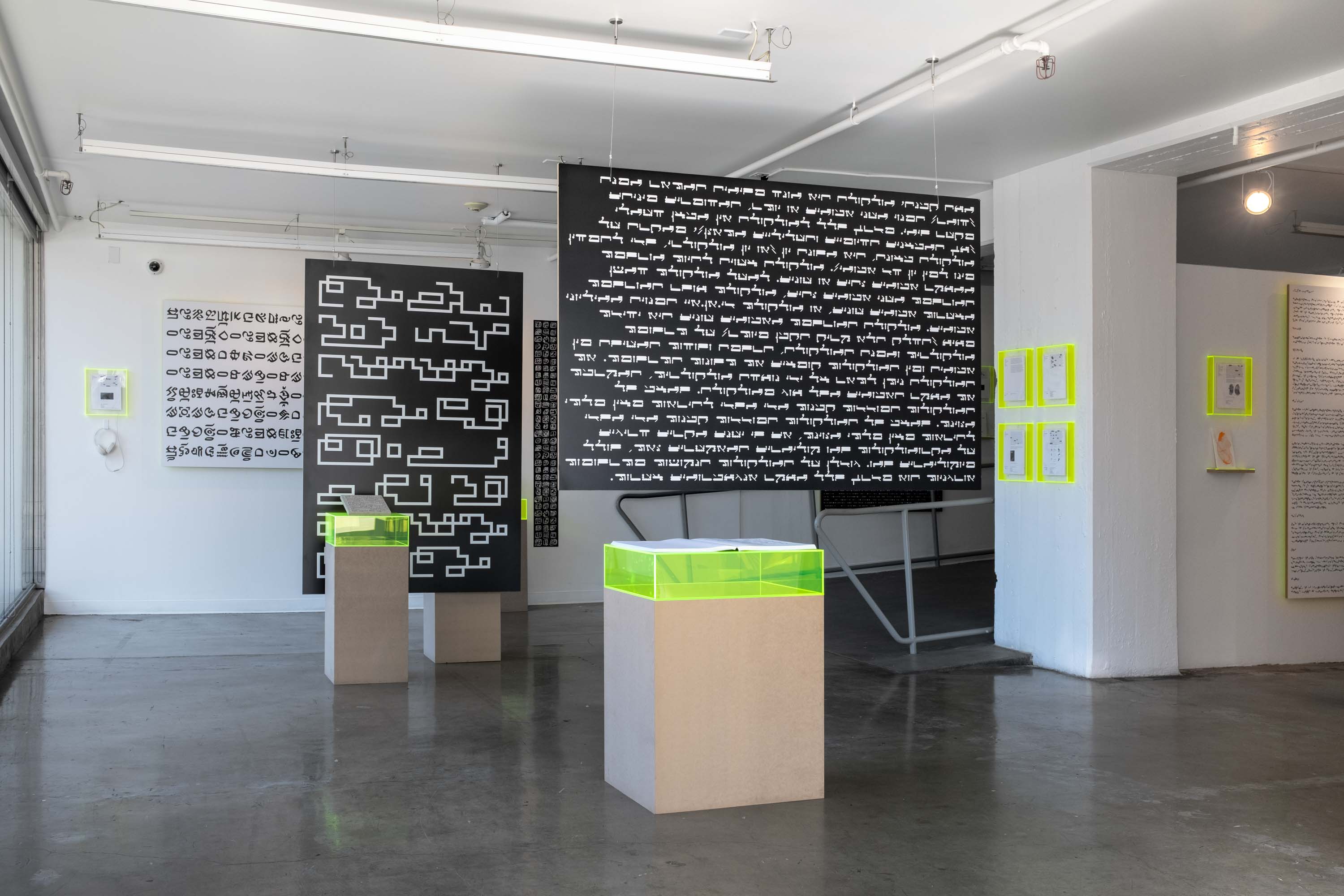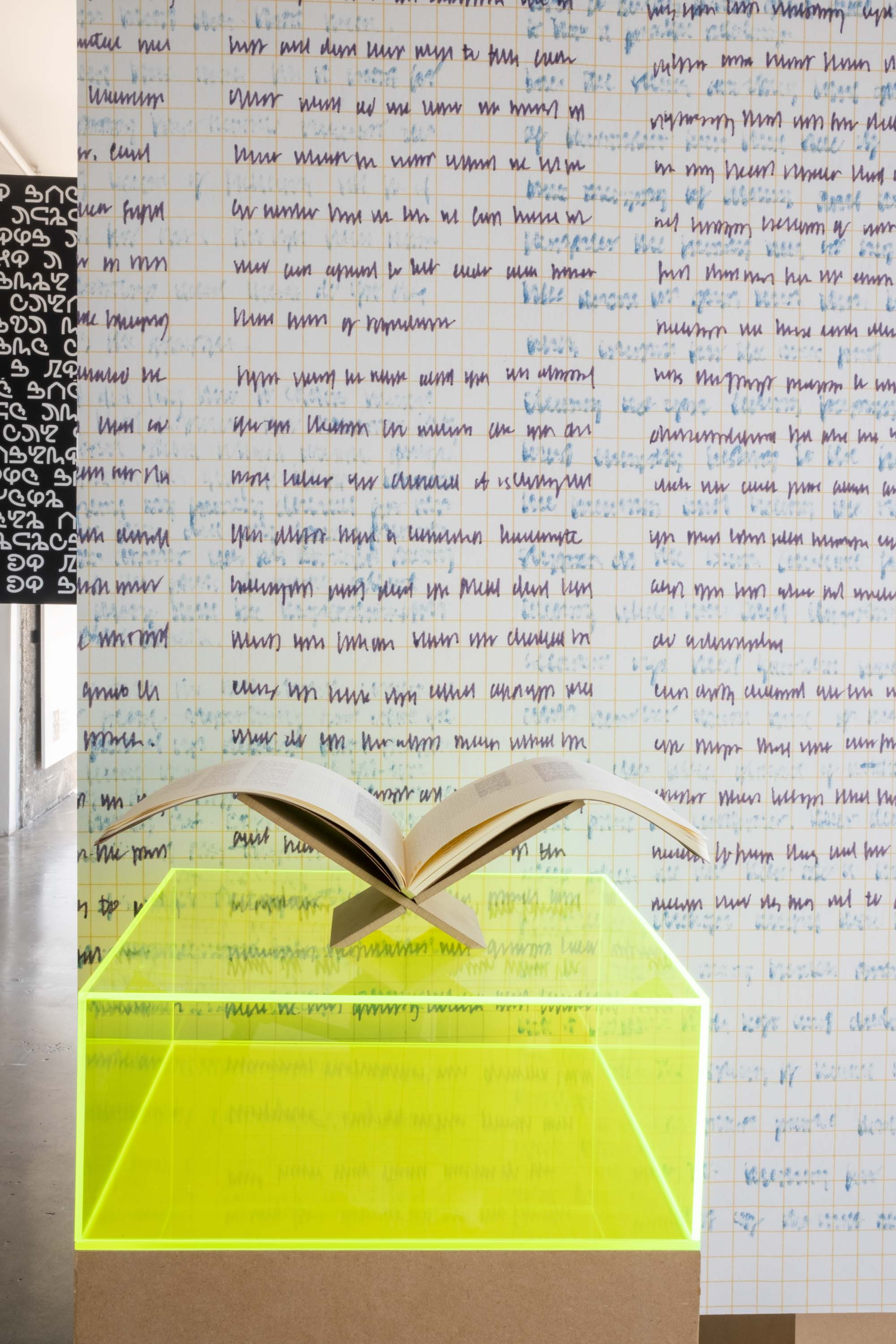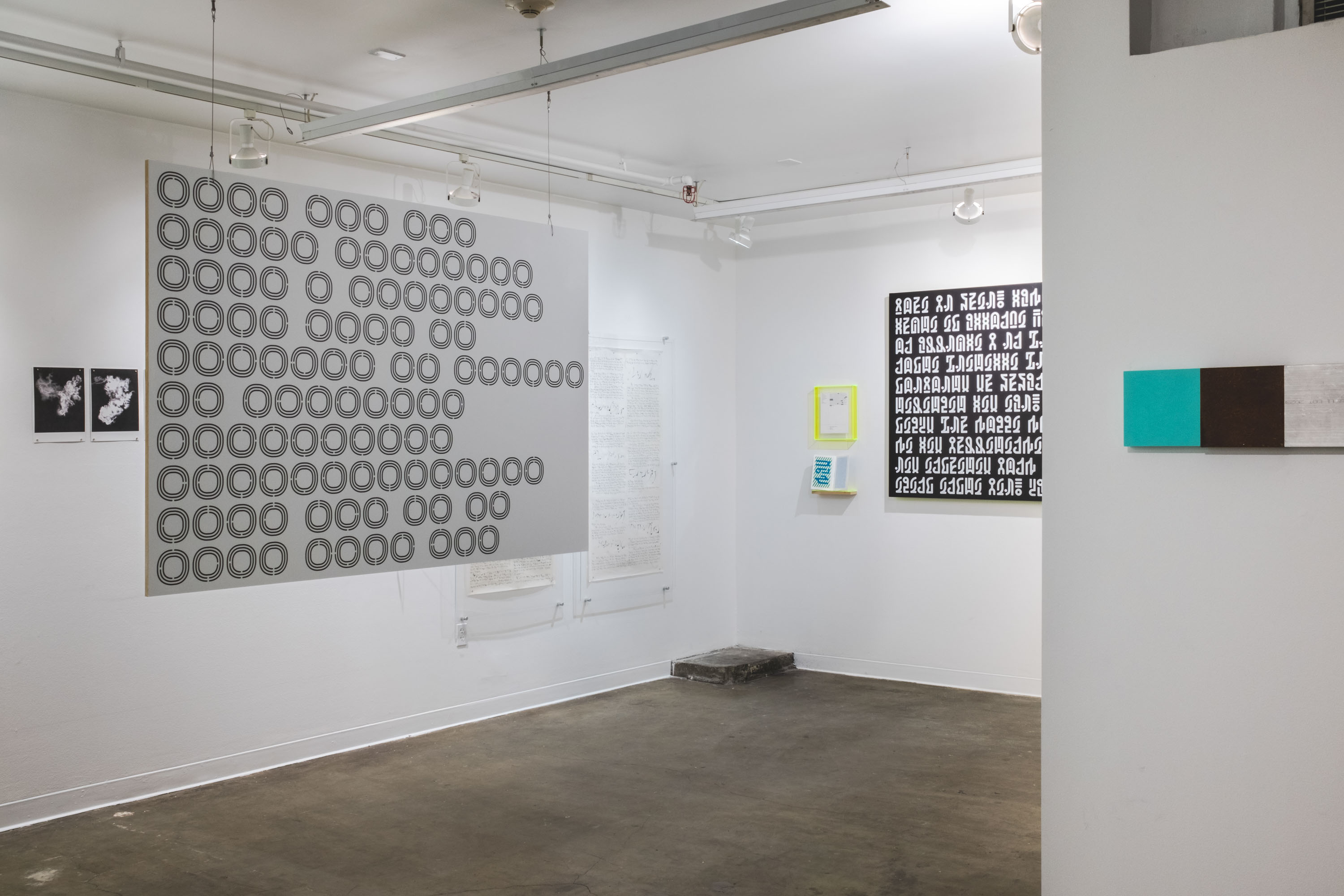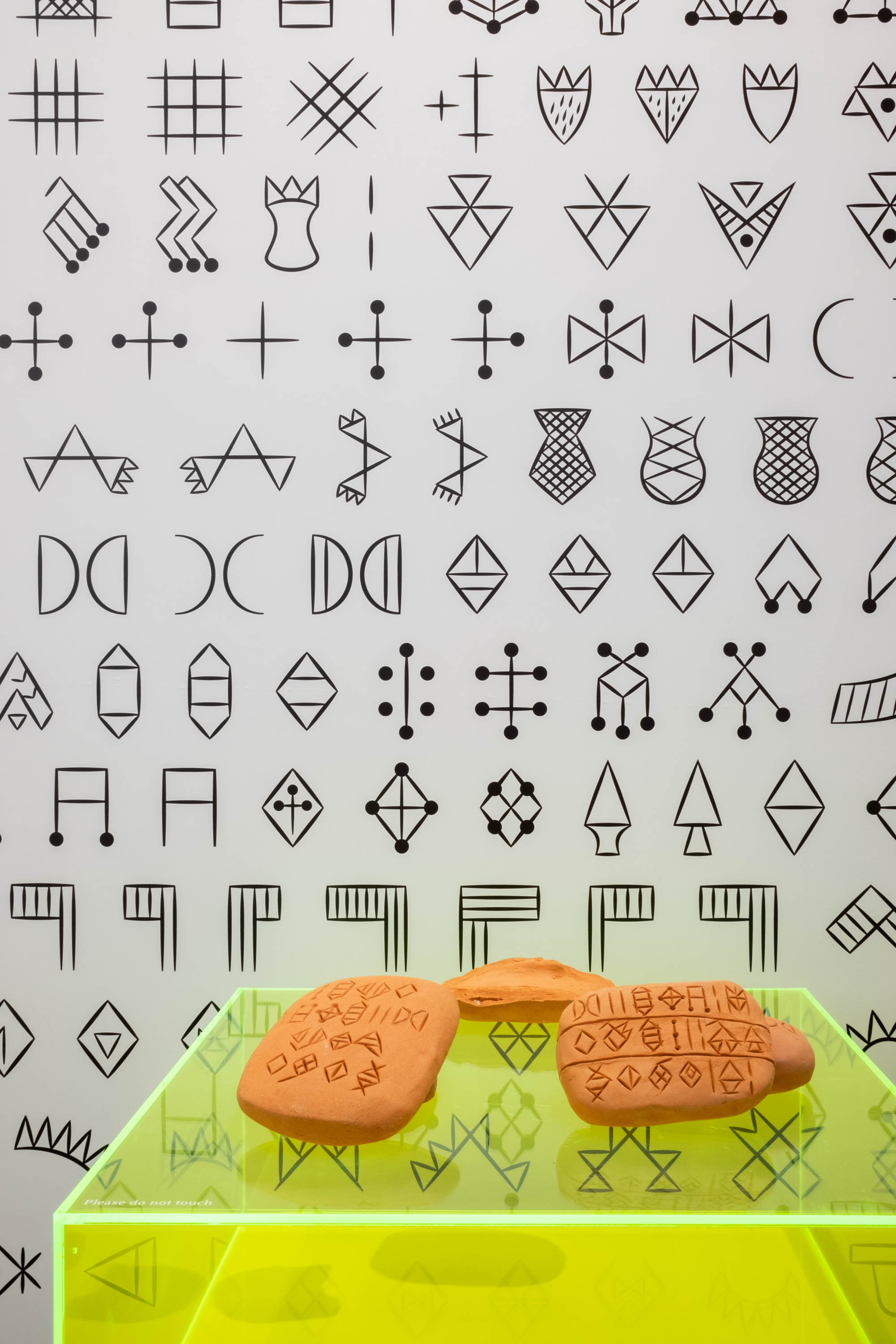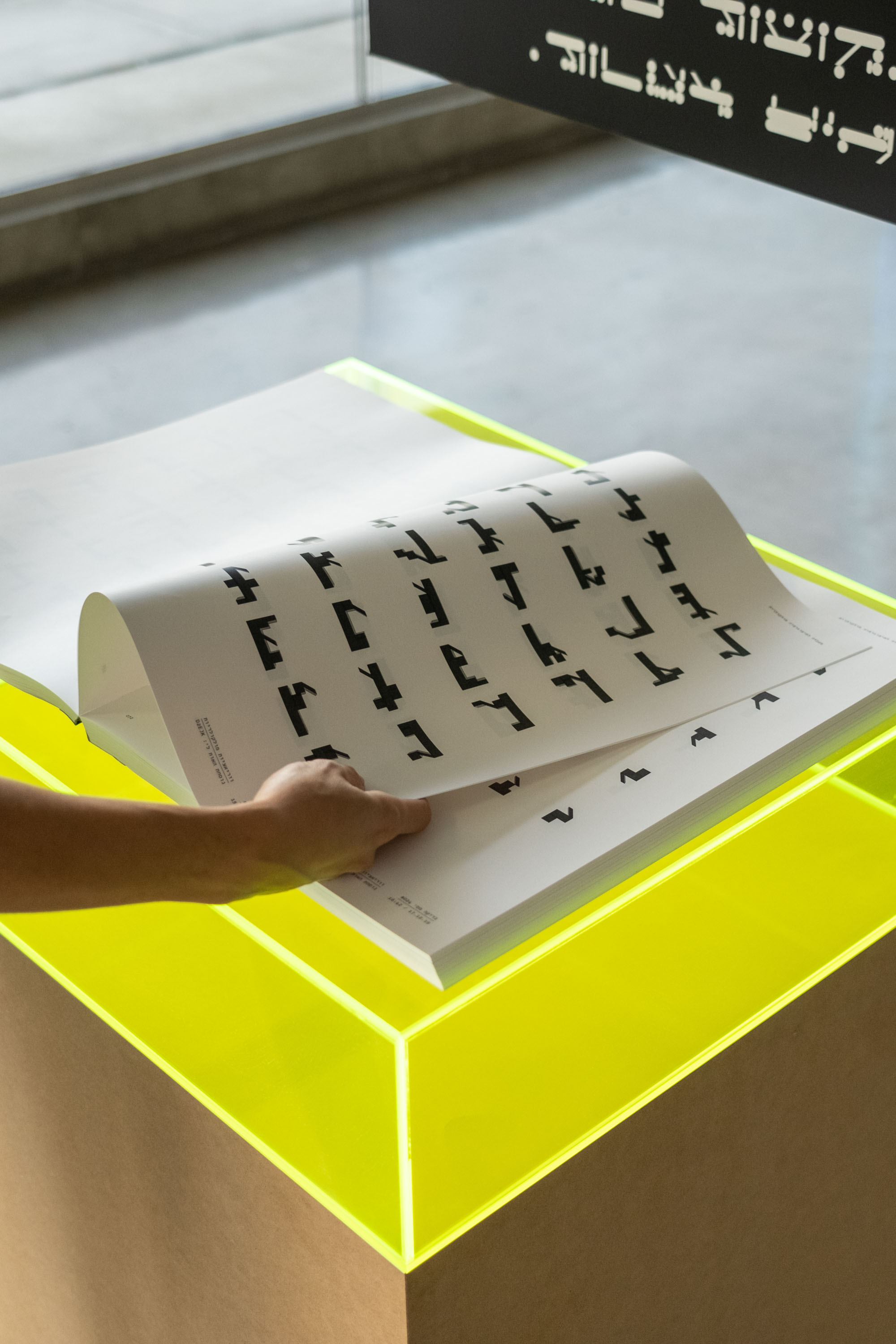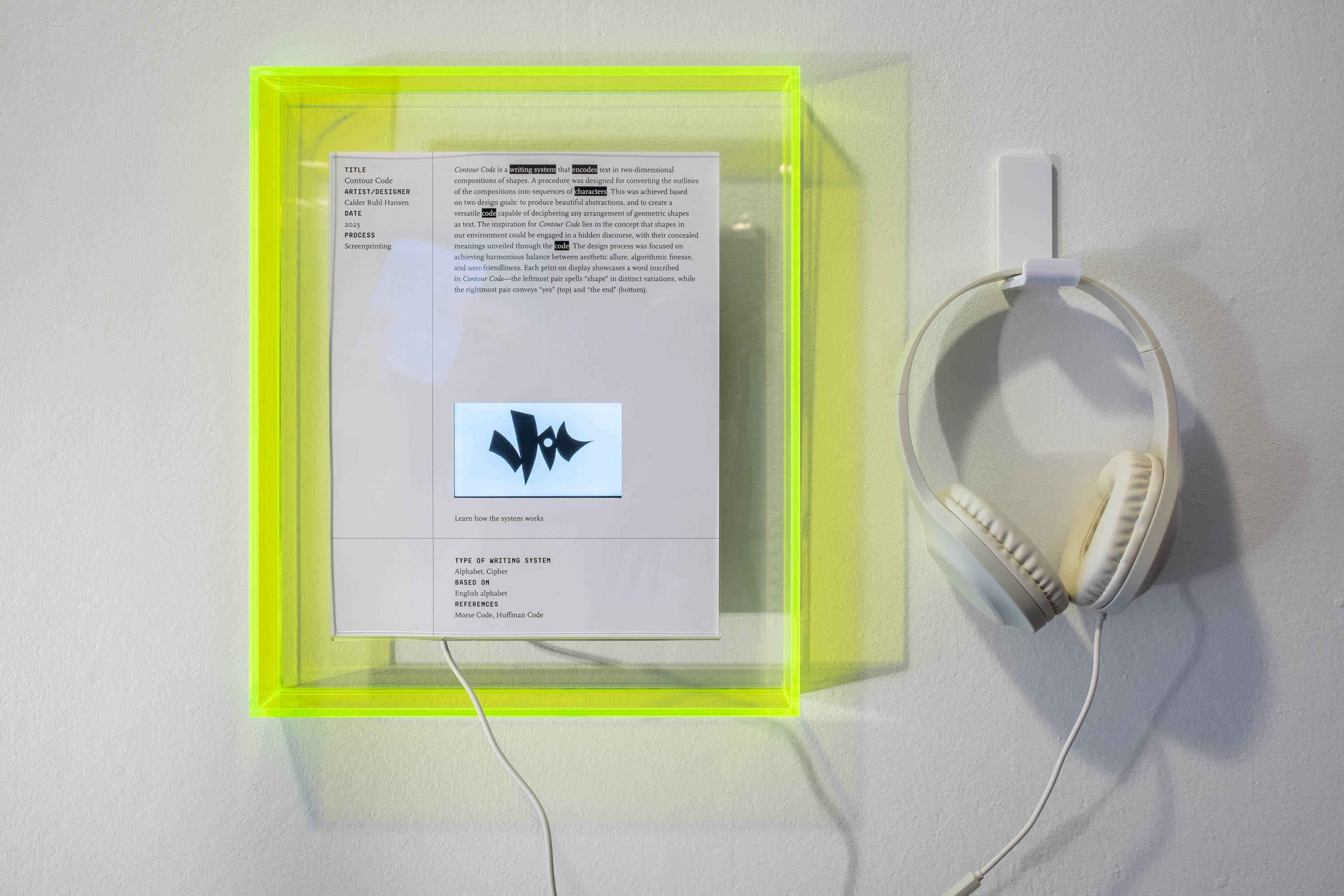Whence did the wond’rous mystic art arise,
Of painting SPEECH, and speaking to the eyes?
That we by tracing magic lines are taught,
How to embody, and to colour THOUGHT?
―Marshall McLuhan, The Medium is the Massage, 1967
With a history spanning more than five millennia, the practice of writing serves as a testament to the enduring human impulse to record, preserve, and transmit information across time and space. Writing systems—sets of standardized symbols and rules used to visually convey language—can carry within them a culture’s history, traditions, and collective knowledge, making them powerful vessels of cultural preservation and expression. Quasi: Experimental Writing Systems is an exhibition about invented or imaginary writing systems. Klingon, Elvish, and Kryptonian are popular contemporary examples, but they represent only a fraction of a much broader landscape. Unlike writing systems that have evolved organically over generations of collective usage, the projects showcased in the exhibition present new configurations of signs and symbols, meticulously crafted at distinct points in time, each born with intention and purpose.
The urge to craft a writing system may emerge from a variety of personal or cultural motivations. A few examples from an inexhaustible list of creative impulses are encoding messages through cryptography, preserving endangered languages, methods for faster writing, writing devoid of semantic content, investigating historical symbolism and its contemporary relevance, even channeling otherworldly entities through automatic writing. This “secret vice” of inventing languages—as J.R.R. Tolkien refers to it—exposes us to linguistic operations outside our everyday experience and reveals a fascination with otherness where mythology and utopia are recurring themes.
The concept for Quasi developed from a personal connection to its theme. Around the age of eight, as a reaction to a loud and active home, I designed my own writing system—an encrypted cipher based on the Greek alphabet—invented for writing private thoughts (shown above). A decade later, I developed a mild obsession with the stories set in Tolkien’s Middle Earth and the fictional languages drawn from his vast backdrop of mythic narratives. Another ten years on, amidst a career change, my journey into typography began, revealing its intricate connection to language. Now, these personal chapters come together in what started as a research project at the intersection of typography, linguistics, and fiction.
The works in the exhibition are rooted in this intersection. Delivered as font design projects, art books, scrolls, drawings, sculptures, and other artifacts, some works are intentionally designed to be functional writing systems, allowing potential usage by others, while some exist in a realm where functionality becomes entirely irrelevant: Calder Ruhl Hansen’s D16 Syllabics is an abugida (syllabary writing system where consonants have built-in vowels) drawing from Canadian Aboriginal syllabics; Coline Besson’s Arrakis, inspired by Frank Herbert’s science fiction novel Dune, is a sand plate inscribed with a rectilinear interpretation of the Arabic Kufic script; and Sound Clouds and Syllabaries by Ilka Helmig and Johannes Bergerhausen introduces a series of drawings capturing patterns of exhaled smoke generated during vocalization of syllables. Many of the projects in Quasi remain works-in-progress, mirroring the perpetual evolution of language itself—a fluid entity that lacks a definitive version and adapts in tandem with societal shifts.
In her book, The Left Hand of Darkness, Ursula K. Le Guin writes that “truth is a matter of the imagination,” implying that fiction can unveil alternative modes of existence. Quasi, at its core, embraces this concept, viewing the invention of writing systems as a speculative process and an exercise of discovery to uncover new quasi-realities within our systems of communication. Playing with language and fostering linguistic diversity contributes to an ongoing dialog about imagination and re-worlding, and their potential as rebellious processes to disrupt existing power structures and reshape our collective narrative.
Participating artists and designers: Ximena Amaya, Johannes
Bergerhausen, Coline Besson, C.C. Elian, Sina Fakour, Kobi Franco,
Aleksandr Hafermaas, Simon Fréour, Calder Ruhl Hansen, Ilka Helmig,
Marianne Hoffmeister, Simon Johnston, Stephan Kamp, Michelle Koza,
Aspacia Kusulas, Lavinia Lascaris, Ezekiel Oyinloye, Barry Spencer,
Simon Thiefes, and The Repository of Wonders.
Curation, exhibition design: Lavinia Lascaris, Ximena Amaya, Simon Johnston
Fabrication, installation: Joshue Molina, Saya Makhmud, Karlo Diego
Administration: Susan Malmstrom, Clifford Pun

